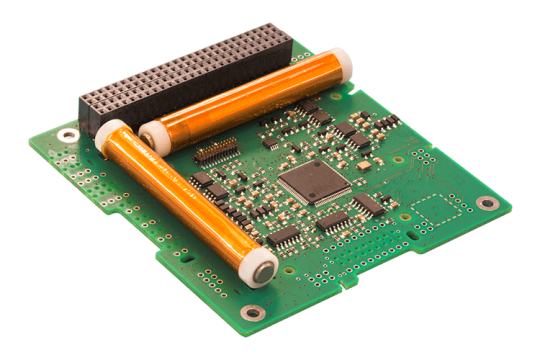Magnetorquer
A magnetorquer, also known as a magnetic torquer or magnetic coil, is a device used to control the orientation of a satellite or spacecraft by generating a magnetic field. This magnetic field interacts with the Earth's magnetic field to produce a torque, which enables the satellite to adjust its attitude without using fuel or mechanical moving parts. Magnetorquers are commonly used in small satellites, such as CubeSats and nanosatellites, due to their simplicity, reliability, and low cost.
How a Magnetorquer Works
Magnetorquers consist of electromagnetic coils or magnetic rods that generate a magnetic dipole when electric current flows through them. When this magnetic dipole interacts with the Earth's magnetic field, a torque is generated according to the right-hand rule, causing the satellite to rotate. By carefully controlling the direction and magnitude of the current in the coils, the satellite's orientation can be adjusted in a controlled manner.
The torque produced by a magnetorquer is given by the equation:
T=M×B\mathbf{T} = \mathbf{M} \times \mathbf{B}T=M×B
where:
- T\mathbf{T}T is the torque generated,
- M\mathbf{M}M is the magnetic moment created by the magnetorquer,
- B\mathbf{B}B is the Earth's magnetic field.
Types of Magnetorquers
-
Magnetic Coils (Torque Rods): These are typically cylindrical rods wrapped with a wire coil. When current passes through the coil, a magnetic field is generated along the length of the rod. Torque rods are simple, easy to manufacture, and provide a moderate amount of torque, making them suitable for small and medium-sized satellites.
-
Magnetic Torquer Bars: These are solid magnetic bars that generate a magnetic field when an electric current is passed through them. Torquer bars are more rigid than coils and can generate a stronger magnetic field, offering higher torque for larger satellites.
-
Air Core Magnetorquers: These magnetorquers use coils without a magnetic core, relying on the air core to generate a magnetic field. While they produce less torque compared to core-based magnetorquers, they are lighter and can be more suitable for very small satellites where mass is a critical factor.

Applications of Magnetorquers
-
Attitude Control: The primary use of magnetorquers is for attitude control in satellites. By adjusting the magnetic field generated by the magnetorquers, the satellite can orient itself in space to align solar panels with the Sun, point antennas toward Earth, or stabilize its orientation.
-
Desaturation of Reaction Wheels: Magnetorquers are often used in conjunction with reaction wheels, which are another form of attitude control device. Over time, reaction wheels can accumulate angular momentum, which needs to be desaturated or offloaded to maintain control. Magnetorquers provide a method to bleed off excess angular momentum by applying a counteracting torque.
-
De-Orbiting Small Satellites: In some cases, magnetorquers can be used to induce a controlled tumbling motion or specific orientation to assist with the de-orbiting process of small satellites, aiding in their re-entry and reducing the risk of space debris.
-
Magnetic Field Measurement and Science: Magnetorquers can also be used in scientific missions where controlling the satellite's orientation relative to the Earth's magnetic field is necessary for magnetic field measurements or other scientific experiments.
Advantages of Magnetorquers
- Fuel-Free Operation: Magnetorquers do not require propellant, making them a fuel-free option for attitude control. This extends the mission duration and reduces operational costs.
- Low Power Consumption: They typically require low electrical power to operate, making them suitable for small satellites with limited power budgets.
- Simplicity and Reliability: Magnetorquers have no moving parts, which increases their reliability and reduces the likelihood of mechanical failure.
- Compact and Lightweight: These devices are relatively small and lightweight, which is advantageous for small satellite missions where space and weight are limited.
Limitations of Magnetorquers
- Limited Torque Capability: Magnetorquers provide less torque compared to other attitude control methods, such as thrusters or large reaction wheels, making them less suitable for large satellites or those requiring rapid maneuvering.
- Dependence on Earth's Magnetic Field: Their effectiveness diminishes with distance from Earth, as the strength of the Earth's magnetic field decreases, limiting their use to near-Earth orbits.
- Unidirectional Control: Magnetorquers can only generate torque perpendicular to the Earth's magnetic field, which can limit maneuverability depending on the satellite's orbit and orientation requirements.
Magnetorquers are a versatile and efficient tool for satellite attitude control, particularly for small satellites and CubeSats operating in low Earth orbit. Their simplicity, reliability, and fuel-free operation make them an attractive option for many space missions. While they have some limitations in terms of torque generation and dependence on the Earth's magnetic field, their advantages make them a popular choice for a wide range of applications in satellite technology.